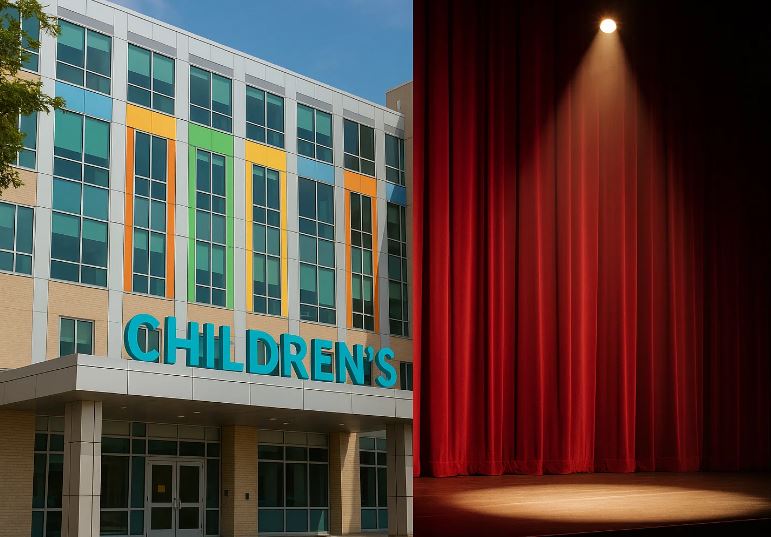Riley Hospital to The Mousetrap: the connective thread between a premier children’s hospital and the world’s longest-running mystery play.
Riley Hospital to The Mousetrap might sound like an odd pairing at first glance. One is a leading children’s hospital in the Midwest, the other is a legendary murder mystery play that has been running longer than most of us have been alive. But the more you peel back the layers, the more the combination begins to make sense. Both settings deal with suspense, the unknown, and the human need for resolution. One plays out in real life with stakes of health and healing, the other unfolds on stage with gasps and plot twists. Like many unexpected entertainment connections we discover, let’s walk the path from Riley Hospital to The Mousetrap and see why this connection matters.
What You'll Discover:
Understanding Riley Hospital
A hospital with heart
Riley Hospital for Children is known for more than just medical care. It’s a place where children face some of the toughest battles of their lives, and yet the environment tries to soften the edges of fear. Specialists cover every imaginable condition, but what makes Riley stand out is its attention to the emotional world of children. Healing here isn’t just about medication or surgery, it’s about the total experience.
Programs that go beyond medicine
Inside Riley, there are programs designed to take children out of the mindset of “patient” and back into the role of “child.” Art therapy, music therapy, child life specialists, all play a role in creating moments of normalcy. When a child paints a picture, strums a guitar, or laughs with a visiting entertainer, something shifts. The sterile walls of a hospital room become less intimidating, and imagination takes center stage.
A community inside a hospital
Families at Riley often describe the hospital as a second home. There are gardens, family lounges, and even play zones that allow kids to be kids, even in the middle of treatment. It’s not a perfect replacement for school or playgrounds, but it does something invaluable: it reminds children and families that their lives are not defined entirely by illness.
Understanding The Mousetrap
A play that never ends
Agatha Christie’s The Mousetrap has been on stage for decades, holding the record as the longest continuously running play in history. Its premise is simple on the surface: strangers snowed in at a guesthouse discover that one of them is a murderer. Suspicion spreads, accusations fly, and the audience hangs on every word until the final reveal.
Why it captivates
The beauty of The Mousetrap lies in how it manipulates tension. It keeps people guessing, creating moments where everyone in the audience leans forward, silently asking, “Who did it?” The twist ending seals the deal, rewarding patience with shock and satisfaction. But beyond the suspense, the play survives because it taps into something universal: the anxiety of not knowing, and the relief of finally discovering the truth.
Connecting the Two: Riley Hospital to The Mousetrap
At first, Riley Hospital and The Mousetrap appear to live in separate worlds. One is grounded in real human struggle, the other is staged fiction. But if you think about what ties them together, the connection becomes rich and revealing.
Suspense and uncertainty
In The Mousetrap, the tension comes from not knowing who the murderer is. At Riley, families face a different kind of suspense: waiting for test results, wondering how treatment will progress, living day to day with uncertainty. The emotional rhythm is remarkably similar, moments of fear, bursts of hope, and the longing for resolution.
Storytelling as survival
Storytelling is not a luxury in hospitals; it’s a necessity. Children make sense of their experience by weaving stories, sometimes through drawing, sometimes through play, sometimes through the games hospital staff create for them. Mystery and narrative help them process fear. In this sense, The Mousetrap becomes a metaphor: it shows us how humans lean on narrative tension to face the unknown.
A shared experience
Going to a play is about more than the performance, it’s about sitting in a room full of strangers who gasp, laugh, and breathe in sync. The hospital, in its own way, creates that same collective journey. Families share hallways, waiting rooms, and the quiet tension of hope. Both settings remind us that even in isolation, we are part of something larger.
Real-World Crossovers
Events that blur lines
Riley hosts events that feel almost theatrical, concerts in the child life zone, interactive games, even performances by visiting entertainers. For a child who has been confined to a hospital bed, these moments feel like stepping into another world. The stage and the hospital corridor don’t feel so far apart in these instances.
Theatre as fundraising and therapy
Community theatres often perform plays like The Mousetrap as part of fundraising drives for hospitals. Imagine the power of a play famous for suspense being used to support a hospital famous for hope. It’s not just symbolic; it’s practical. The arts and medicine often intersect when the community comes together.
Symbolism: The Mousetrap as a Lens for Healing
The masks we wear
In Christie’s play, every character hides something, past secrets, unspoken fears, or lies. In hospitals, children and families often do the same. A brave face may hide deep anxiety. Parents may smile while silently worrying. Recognizing these masks is crucial, because healing isn’t just physical, it’s emotional honesty too.
Isolation and connection
Monkswell Manor, the setting of The Mousetrap, is cut off by snow. That forced isolation drives characters to interact in unexpected ways. Hospitals create a similar sense of separation: children may feel cut off from school, friends, and normal life. But within those walls, deep connections form, with other families, with nurses, with doctors who become confidants.
The reveal and release
The climactic reveal in The Mousetrap releases the audience’s tension. In medicine, the “reveal” might be a diagnosis, or the moment a treatment starts working. Even when news is difficult, knowing is often better than not knowing. Resolution, in any form, is powerful.
Lessons from Riley and The Mousetrap
- Design matters – Just as a stage set shapes the mood, hospital design influences healing. Light, space, and comfort matter as much as medical machines.
- Suspense can be reframed – In theatre, suspense is entertainment. In hospitals, suspense can be terror. By reframing it through storytelling, games, or rituals, it becomes more bearable.
- Shared experience heals – Whether it’s an audience in a theatre or families in a hospital lounge, being together in uncertainty makes it less heavy.
- Narrative is medicine – The act of telling a story, even one with fear at its center, can make chaos feel structured.
- The arts and healthcare are partners – Plays like The Mousetrap aren’t just entertainment; they are tools for fundraising, therapy, and community building.
Challenges in Blending the Two
It’s tempting to romanticize the connection, but it’s important to note limits. Hospitals cannot allow mystery to replace clarity, patients need honest communication, not prolonged suspense. And while plays like The Mousetrap thrive on fear, hospitals must tread carefully to ensure that stories used in therapy uplift rather than traumatize. Balance is key.
Possible Applications
- Mystery-themed workshops: Hospital staff could create child-friendly “whodunit” games, letting children become detectives and solve puzzles.
- Benefit performances: Local theatre groups could perform The Mousetrap to raise funds for pediatric programs.
- Storytelling groups: Weekly sessions where children listen to suspenseful stories and then write their own endings, giving them control over how the mystery resolves.
- Staff training through theatre: Doctors and nurses could use improv and role-play exercises to improve communication skills with children and families.
Unique Perspectives
Looking at hospitals through the lens of theatre offers radical insights. The hospital itself is a kind of stage. Doctors step into roles with scripts (diagnoses, treatment plans). Families play multiple parts, advocate, caregiver, comforter. Children are both actors and audience in their own unfolding drama. Recognizing this can shift how hospitals operate, from design to communication, creating more humane care.
Why This Journey Matters
Tracing the path from Riley Hospital to The Mousetrap isn’t about forcing two unrelated things together. It’s about seeing how life and art reflect one another. Hospitals carry suspense, fear, and the need for resolution, just like a mystery play. Plays remind us of the resilience we need to face real life. When you walk from a hospital room into a theatre, you’re moving from one form of tension to another, but both reveal truths about who we are and how we endure uncertainty.
Key Takings
- Riley Hospital is more than a medical facility; it is a space where healing includes creativity, community, and emotional support.
- The Mousetrap demonstrates the universal human pull toward suspense, mystery, and eventual resolution.
- Both hospital life and theatre rely on shared experience, collective emotion, and the release that comes from truth revealed.
- Storytelling bridges medicine and art, offering comfort, empowerment, and meaning to children facing illness.
- Practical ideas like benefit performances, storytelling workshops, and adapted mystery games could deepen the connection between hospitals and theatre.
Additional Resources:
- Children’s Hospitals and Arts Programs: Details how hospitals use theatre, music, and storytelling through arts programs to improve recovery and well-being of pediatric patients in healthcare settings.
- Narrative Medicine in Practice: Explains how storytelling techniques help patients process illness and find resilience, highlighting the benefits of narrative-based medicine in clinical practice.





